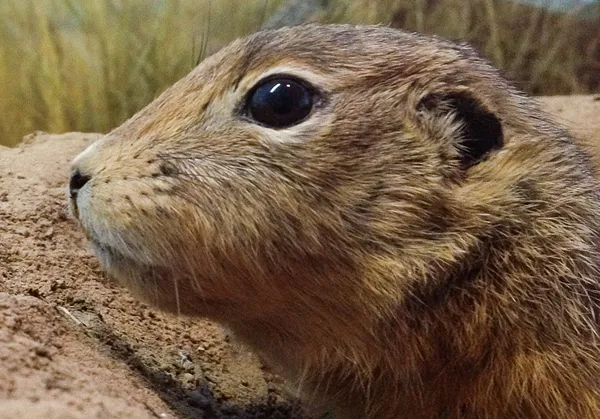Of all the ice age animals still alive today, the Arctic ground squirrel has arguably taught us the most about the ice age world. Ground squirrels first appeared in North America about 10 million years ago, but quickly expanded north and west into Eurasia. The oldest discovered Arctic ground squirrel remains have been found in Alaska and date back 1.8 to 2.5 million years. Today, these medium-sized rodents can be found beyond the treeline or in treeless clearings across the Circumpolar North, from Siberia to the Canadian Eastern Arctic. They are commonly seen along roadsides throughout much of southern Yukon—including a unique population of jet-black Arctic ground squirrels that live along the Alaska highway south of Whitehorse, Yukon.
Arctic ground squirrels are well adapted for their Arctic world, particularly the cold glacial times when the Mammoth Steppe extended across Beringia. They live in large colonies of as many 50 individuals where they maintain extensive tunnel networks. Arctic ground squirrels survive the long winter by hibernating for seven or eight months in dens, or hibernaculae, about 100 centimetres below ground surface. During hibernation, Arctic ground squirrels perform one of the most amazing feats of any living mammal—they allow their body temperature to drop below freezing to -2.9°C, warming up periodically through bouts of shivering.
To survive once they emerge from their dens in late April or early May, they make use of cached seeds and grasses from the previous fall. Conveniently for scientists studying the ice age world, these adaptations for hibernation and seed caching have preserved an unprecedented record of the plant communities present during the Ice Age.
Yukon's Ice Age Ground Squirrels
Ice age Arctic ground squirrel remains are common finds in the thick mud, or "muck", of the Klondike goldfields of Dawson City. Their prehistoric burrows and nests, also called middens, can be found criss-crossing the permafrost bluffs of many placer mine gold mines.
Today, arctic ground squirrel populations are quite restricted to isolated open ground in both southern and northern Yukon, but during the glacial periods of the Ice Age their range expanded into the Klondike goldfields in central Yukon. Arctic ground squirrels do not live in the areas around the Klondike goldfields today due to the proximity of the permafrost to the surface there—ground squirrels cannot dig through frozen ground and must have access to at least 100 centimetres of thawed ground to dig their hibernaculae.
The discovery of ice age ground squirrel burrows and middens in the goldfields presents a counterintuitive puzzle. During the cold glacial periods of the Ice Age, ground squirrels were able to live in areas in which they are absent today because of shallow permafrost. This means that during these cold periods, there must have been greater seasonal permafrost thaw depths than there are today!
This discovery, combined with the knowledge gained from studying the plants and seeds preserved in Arctic ground squirrel seed caches, is allowing scientists to understand how vegetation of the cold, treeless Mammoth Steppe could support immense numbers of large mammals—from woolly mammoths, to bison and horses, and the predators that hunted them.
Want to keep learning? Check out the Beringian Research Notes about the Arctic ground squirrel.


